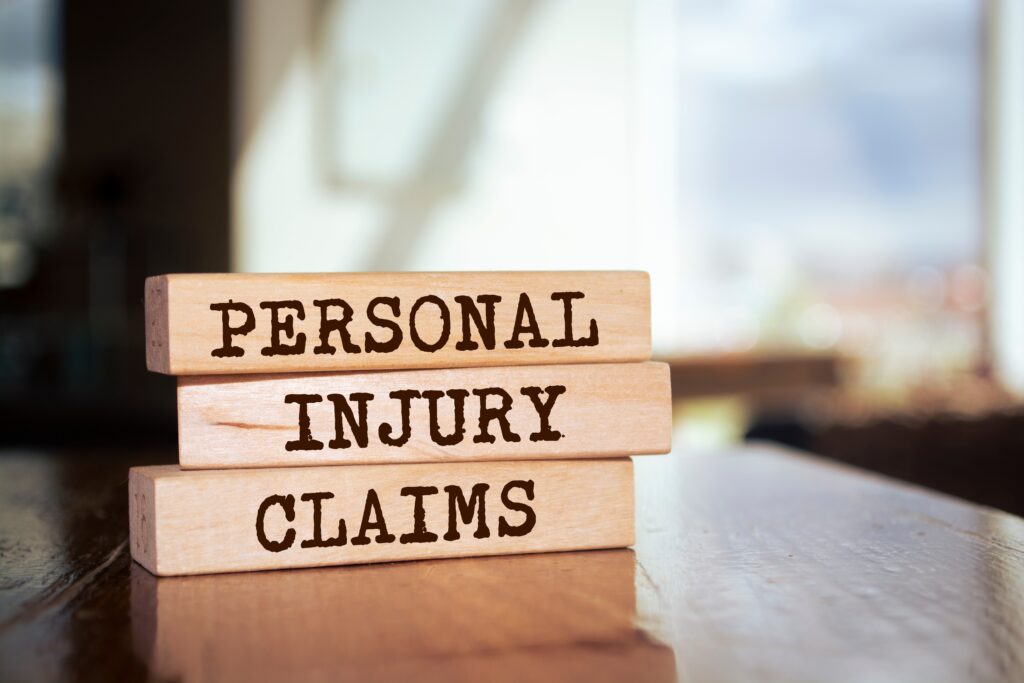Determining fault after an accident is one of the most crucial steps in any personal injury claim. If you’ve been injured and are pursuing compensation, you already know how vital it is to pinpoint exactly who is responsible. Understanding fault isn’t just about assigning blame, either to you or anyone else in the case; it’s about building a solid foundation for the claim so you can seek the full compensation you deserve.
An experienced personal injury attorney can help untangle your accident and claim, providing clarity on who is liable and guiding you through the steps to strengthen your case. From gathering critical evidence to navigating insurance companies and ensuring no opportunity for compensation is left unexplored, we are here to advocate for you and your loved ones. At Aubrey Givens & Associates, PLLC, we’re committed to standing by your side and fighting for the maximum compensation you’re entitled to. Contact us today so we can start investigating your personal injury claim.
What Does Fault Mean in a Tennessee Personal Injury Case?
In Tennessee personal injury cases, "fault" refers to who is legally responsible for causing an accident and the resulting injuries. Establishing fault is a key step because it directly affects your ability to recover damages. The process usually involves examining what happened, how it happened, and whether someone’s actions or negligence contributed to the injury.
If you’ve been involved in an accident, here are a few ways you can document the incident surrounding your personal injury:
- Take photos of the scene, vehicles, injuries, and any relevant conditions.
- Collect statements and contact information from witnesses.
- Get copies of police or incident reports.
- Write down your own account of the events as soon as possible.
- Save any communication with other parties, such as emails or texts.
It’s important to know that just because you were part of an accident doesn’t mean you’re barred from receiving compensation. Tennessee follows modified comparative fault rules, and while your percentage of fault may reduce your compensation, you won’t be completely barred from seeking it.
Tennessee’s Modified Comparative Fault Rule Explained
Modified comparative fault is a legal standard used in Tennessee to determine who is financially responsible for damages after an accident involving shared blame. Under this rule, your ability to recover compensation depends on your own level of fault in the incident.
- You can pursue compensation as long as you are less than 50% at fault for the accident.
- If you share some responsibility, your damages will be reduced by the percentage of fault assigned to you.
- Being found 50% or more at fault means you are not eligible to recover any damages.
- Insurance companies and courts use evidence from both sides to determine each party’s percentage of fault.
No matter the circumstances, it’s vital not to give up hope after an accident. Even if you share some responsibility, you may still be entitled to compensation. Reaching out to an experienced attorney as soon as possible gives you the best chance to collect the evidence you need and puts you on track toward receiving your compensation sooner rather than later.
Key Evidence Used to Prove Fault
Strong evidence is at the heart of any successful personal injury claim. The right documentation can clarify exactly what happened and who should be held responsible. If you’re building a case, these are some of the most essential pieces of evidence that help prove fault:
- Accident scene photographs and videos
- Police accident reports
- Eyewitness statements
- Medical records and treatment notes
- Expert witness testimony, such as accident reconstruction specialists
- Vehicle damage reports or product defect analyses (when applicable)
- Correspondence with insurance companies
Collecting and presenting this evidence can be a complicated process, especially when details are missed or documents are difficult to obtain. An attorney knows how to gather, organize, and present compelling evidence to support your claim, making it far more likely that your case will be successful. Going it alone increases your risk of missing key details that could affect your compensation.
Common Challenges in Proving Fault
Establishing fault in a personal injury case can be challenging, especially without legal guidance to help you navigate the complexities of clearly defining it. Many accident victims find that proving who caused the accident gets complicated, especially when multiple parties or unclear circumstances are involved. These challenges can not only delay your claim but also impact the amount of compensation you might receive.
Some of the most common challenges people encounter when proving fault include:
- Conflicting accounts from those involved in the accident
- Missing or unreliable witness statements
- Lack of photographic or video evidence
- Incomplete or inaccurate police reports
- Insurance companies are disputing responsibility
- Pre-existing injuries that complicate medical evidence
When these challenges come up, it can make the claims process longer and more stressful. Having a skilled lawyer on your team increases your chances of overcoming these obstacles, making sure your story is clearly presented, and fighting for the compensation you deserve.
What to Do After an Accident to Help Establish Fault
After an accident, the first moments can be confusing and stressful. However, the actions you take right away can have a significant impact on your ability to prove who was at fault. It’s important to start documenting everything as soon as possible, when your memory will be freshest, right after the incident. Taking careful notes, collecting evidence, and staying organized can help clarify the facts for your personal injury claim and support your case if you pursue compensation.
Here are some immediate steps to take at the scene:
- Ensure your safety and the safety of others
- Call law enforcement to report the accident
- Exchange information with all parties involved
- Take photos or videos of the scene, damage, and any visible injuries
- Collect contact details for witnesses
- Make notes about the events while they’re still fresh in your mind
Don’t overlook the importance of seeking prompt medical care, even if you think your injuries are minor. Timely medical attention creates an official record of your injuries and ensures you get the treatment you need. Delaying this step can make it harder to link your injuries to the accident, which may affect your claim.
How a Personal Injury Lawyer Can Help Build Your Case
Contact an attorney as soon as possible after you or your loved ones have been injured due to someone else’s negligence. An attorney can thoroughly evaluate your situation, advise you on the best next steps, and step in to handle communication with insurance companies. They know what evidence to look for, how to secure crucial documentation, and which legal strategies are most effective for your specific case. With a knowledgeable attorney on your side, you have an advocate who is dedicated to building a strong case on your behalf.
Reach out to Aubrey Givens & Associates for Help Today
Trying to establish fault on your own after a Tennessee accident shouldn’t be done without experienced legal guidance. Insurance companies may challenge your personal injury claim, documents can be difficult to track down, and it’s easy to make a misstep that weakens your case. Without experienced legal support, you run the real risk of walking away with far less compensation than you deserve, or worse, having your claim denied altogether.
You don’t have to settle for the bare minimum or risk missing vital opportunities in your recovery. The team at Aubrey Givens & Associates, PLLC, is committed to championing your voice and standing up for your rights. Reach out to us today, and let our attorneys fight for the compensation you and your loved ones truly deserve. Contact Aubrey Givens & Associates, PLLC today for a free consultation.




